jpg
Member
- 611
- 15
- 18
- Location
- Boston, MA
Steel Soldiers now has a few new forums, read more about it at: New Munitions Forums!

Try doing a 12-gauge diamond plate steel floor. Thicker than the stock metal (and I'd imagine much thicker than what LMC will sell you...), has a nifty anti-slip surface so those muddy boots from being in the dirt all day wouldn't slide around so much.
I'll add a point. Running the wire brush, I accidentally nicked my door seal. Rookie mistake, I know. A stream of water shot out 6-8" into the air! I was using a wire cup on a 4.5" grinder, and suddenly the back of my hand was getting wet!?!? So there's another contributing factor to the rocker panel rust. The water seals are actually acting as plumbing bringing water to the steel... Now I have to go find new door seals that are not hollow...The fresh air intake is in the kick panel in the footwells. The intake vent is at the base of the windshield, so water drains down the inside the firewall and A-pillar, and splashes out to the floor material. Once there, the padding which is a shredded cloth holds it against the metal until it rusts out and drains. Then with its proximity to the front tires, the splash up from the wheels gets into the hole and then the real trouble starts.
Because water is allowed into the body cavities (eek) the water is allowed into any open passage - the water vapor from evaporation when the truck's body is warm is allowed to travel up the a-pillars to the weld seam at the top cab corners. Water can pool in the rockers too if the drainage is not good or plugs are missing. That the places these square bodies rust: floorpan, cab corners, and rockers...
Thanks. We put all this energy into fixing and preventing rust underneath, and inside places like rocker panels. I wasn't expecting to find it inside a truck that never saw salt. Once I found it, I'm feeling driven to eliminate it to the extent possible.I like how you're not hesitant to tackle the rough spots, jpg; more power to you.
Thanks!i'm hoping you consider starting a travelogue thread for your daughter and her "rolling home" so we can all send our good wishes and support. This has been a great thread, and an interesting enterprise.

She's no wall flower to tackle this undertaking, and clearly she is also a tough cookie. Walking in country like that is NOT a "walk in the park".FYA, here is a picture of where she works. She walked to get here. The M1010 will allow her to set up base camp much deeper in the wilderness than other vehicles, and it provides better protection from predators than a tent. The Forest Service roads wind way back into the mountains, but they are often poorly maintained and far too rough for an SUV.
View attachment 579029

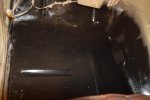
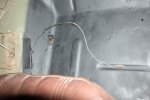
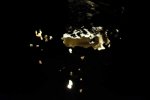
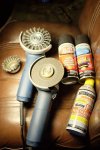
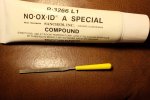
That looks like good product. I usually just use something like a silicon di-electric grease on terminals.I used No-Ox-Id A Special on the contacts. It's a contact grease with all the properties of dielectric grease, plus it has a chemical that eats any residual corrosion (oxide) that might be on your contacts. They use it in the power industry, and for serious antenna connections where a little corrosion can make a big difference. Now the headlights work properly.
View attachment 579075
I just google for it and pick the best price. A tube lasts many years, so the vendor used last time might not be the best choice this time. Sanchem makes it. and you can call them to purchase directly. flea-bay and amazon usually have it. Good Ham Radio antenna suppliers will have it. Really good CB antenna suppliers will have it.That looks like good product. I usually just use something like a silicon di-electric grease on terminals.
Where do you buy THIS stuff?
There is nothing in this world worse than a slotted-screw. I have no idea why anybody even manufactures them any more.When cleaning the headlight contacts, I noticed that the screws that secure the headlights were so rusted that the screwdriver had difficulty engaging the slot. Also, some were missing. So I replaced them all with stainless steel screws. I also noticed that the steel housing behind the headlights was rusty, so I sprayed it with Rust Reformer. I hate rust.
Agreed. It's great for battery posts. I also use it on all electrical connections, especially grounds and antennae. Whenever I'm about to make an electrical connection I never want to see again, I coat it with this stuff.jpg - I have 2 tubes of NO OX. I use it on the battery terminals of all of my vehicles. It's great stuff!One tube will last the average MV owner nearly a lifetime. You don't need much of that stuff on the posts and the terminal threads.
I went ahead and ordered tube of the stuff, (like $1Agreed. It's great for battery posts. I also use it on all electrical connections, especially grounds and antennae. Whenever I'm about to make an electrical connection I never want to see again, I coat it with this stuff.
We get it, advertisements are annoying!
Sure, ad-blocking software does a great job at blocking ads, but it also blocks useful features of our website like our supporting vendors. Their ads help keep Steel Soldiers going. Please consider disabling your ad blockers for the site. Thanks!
